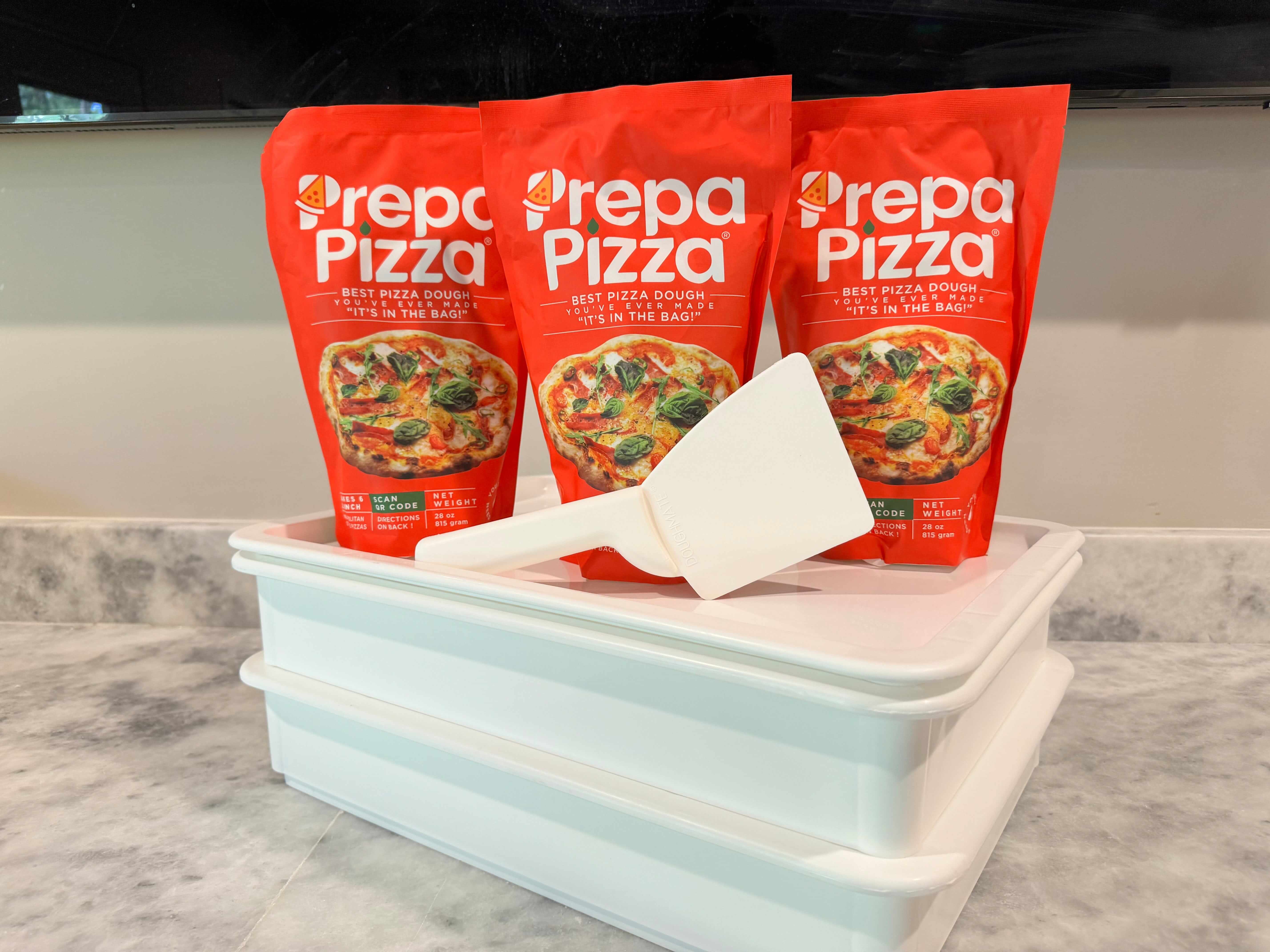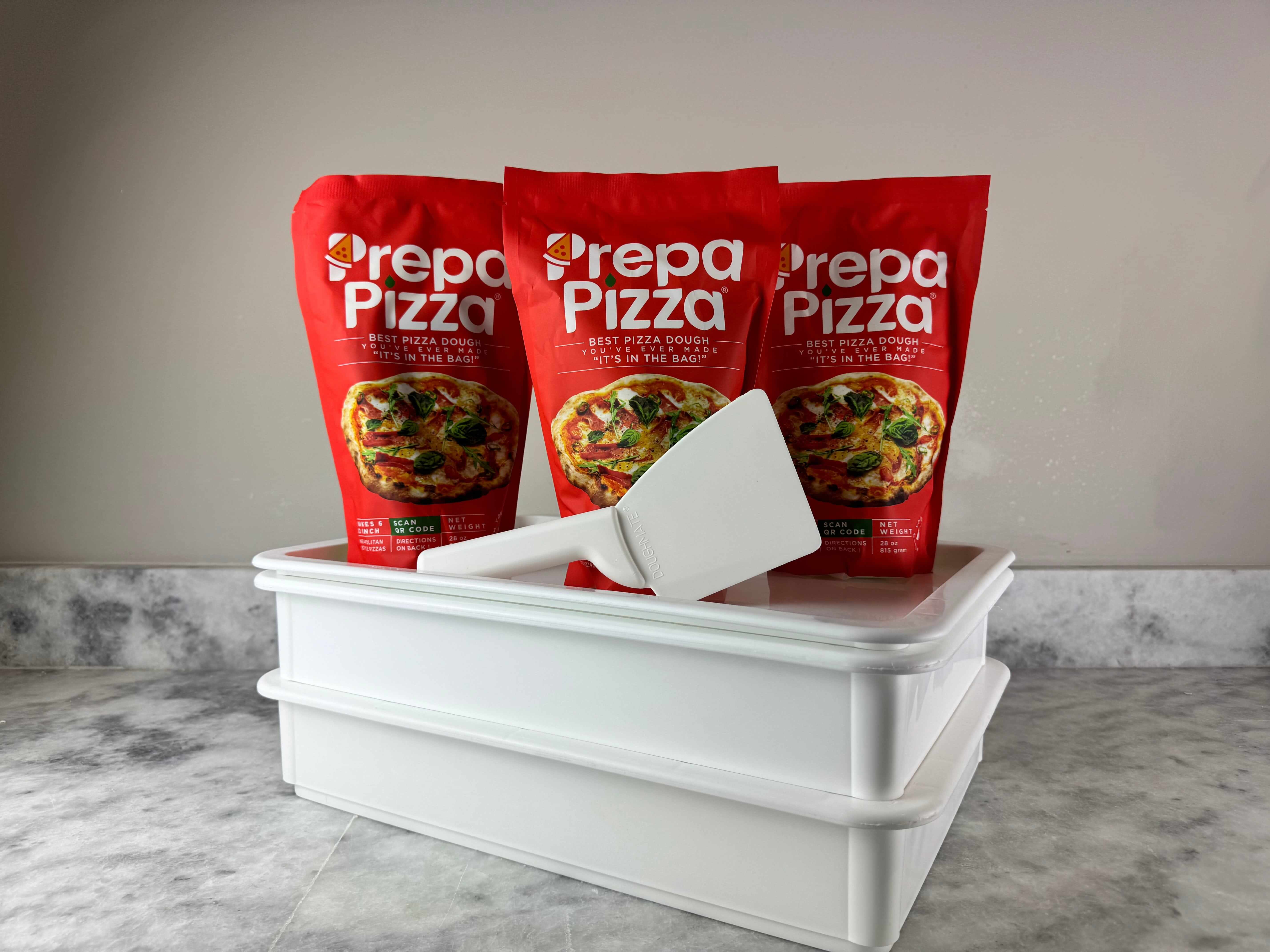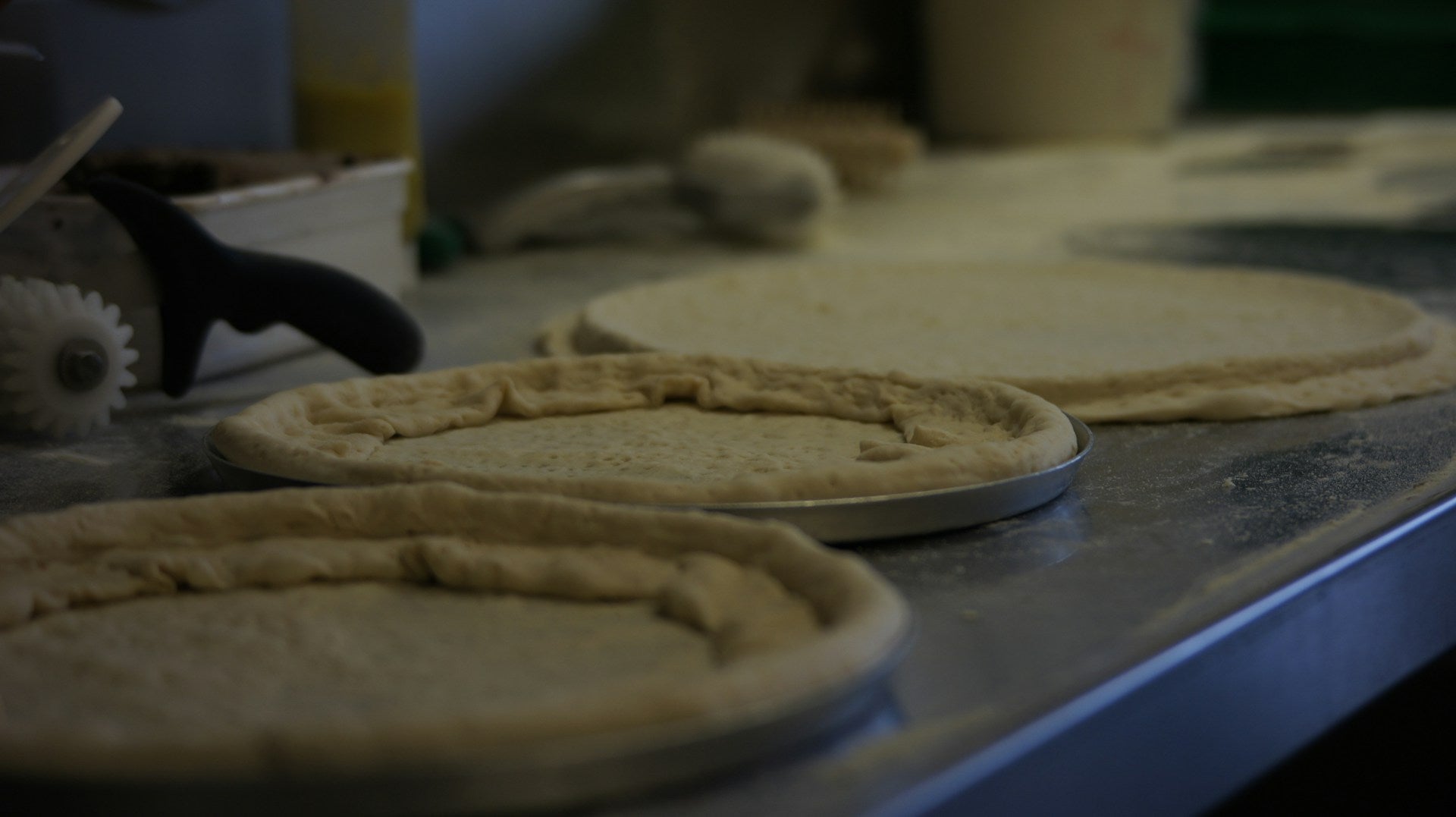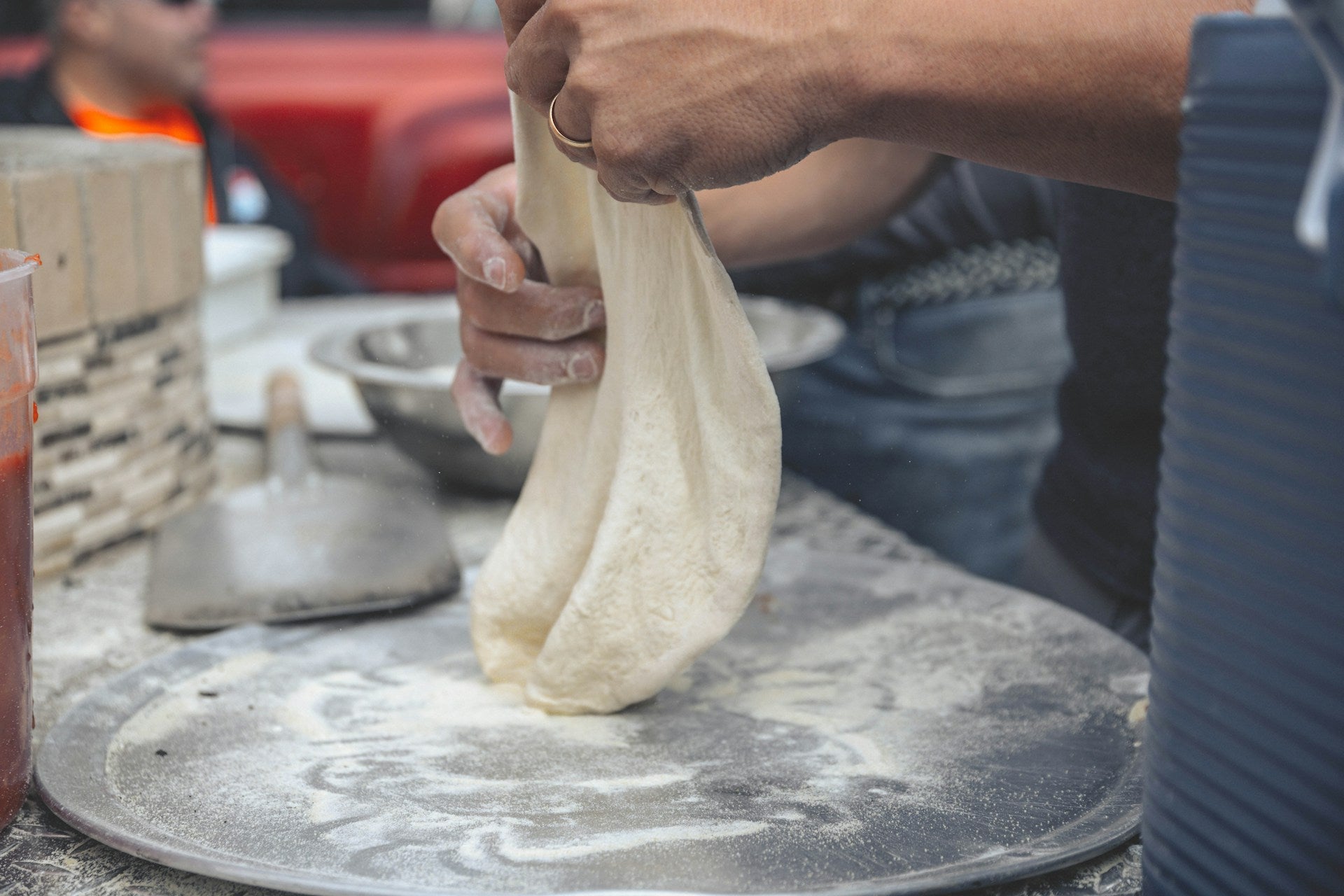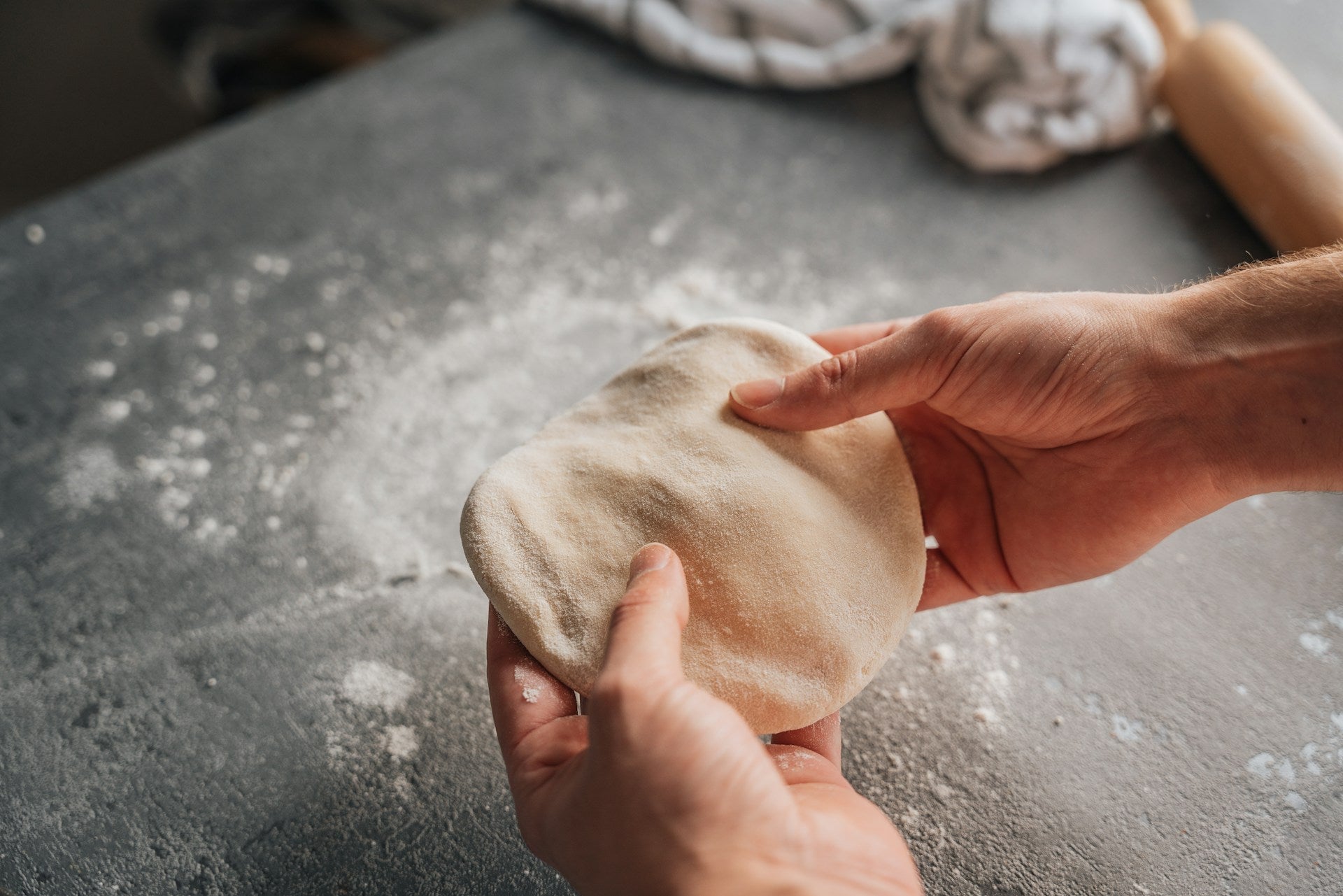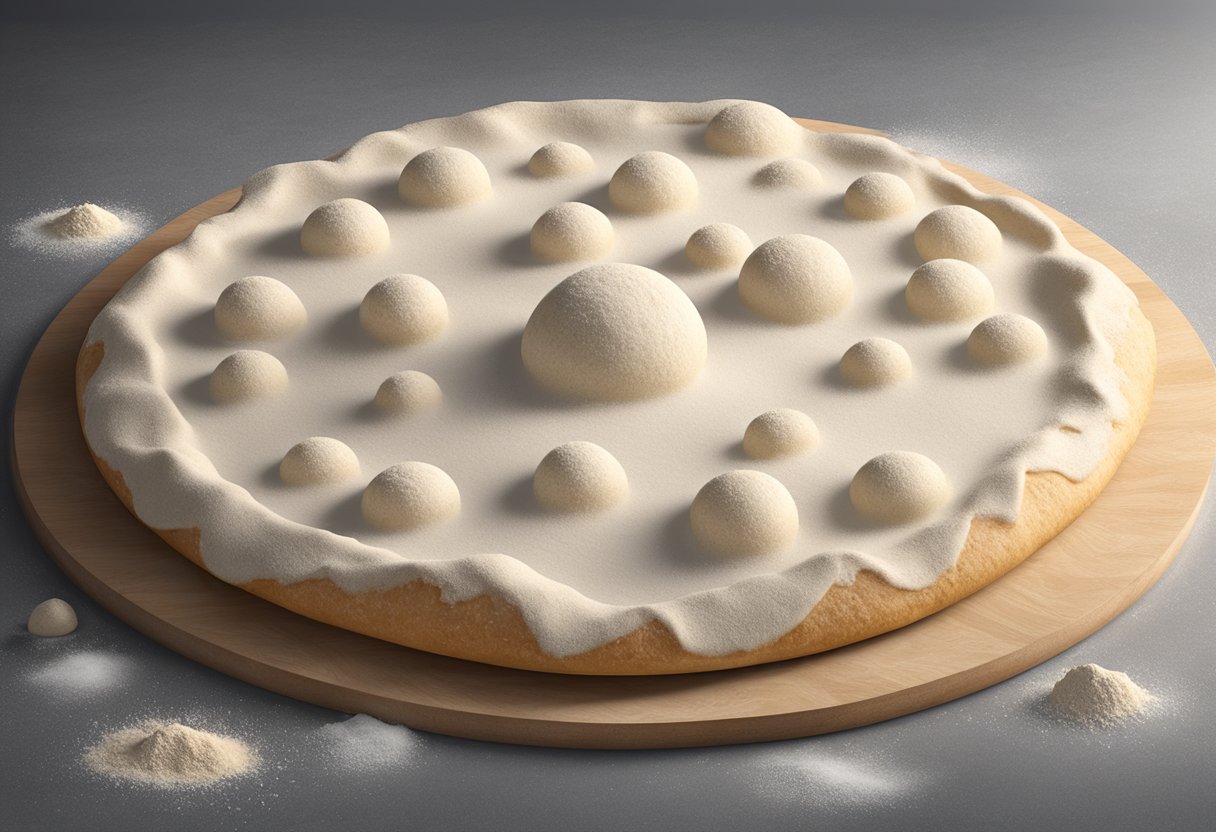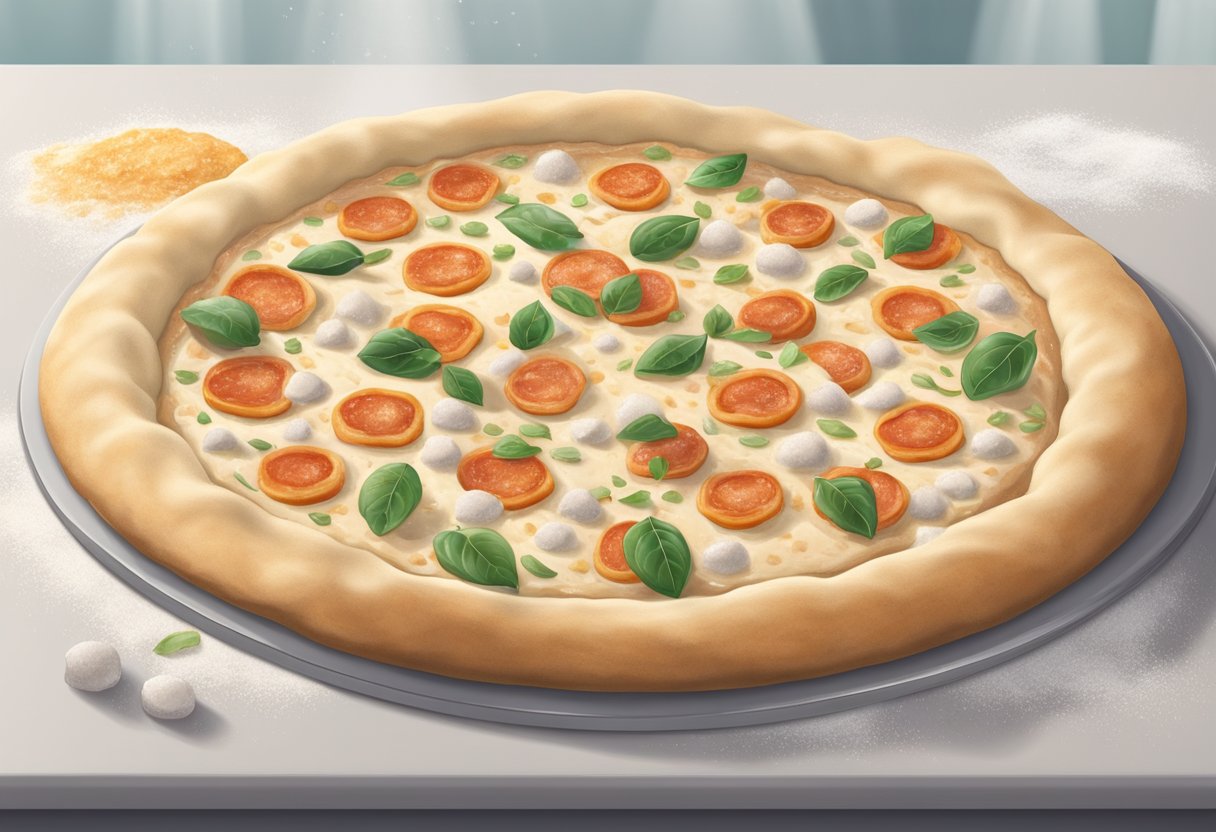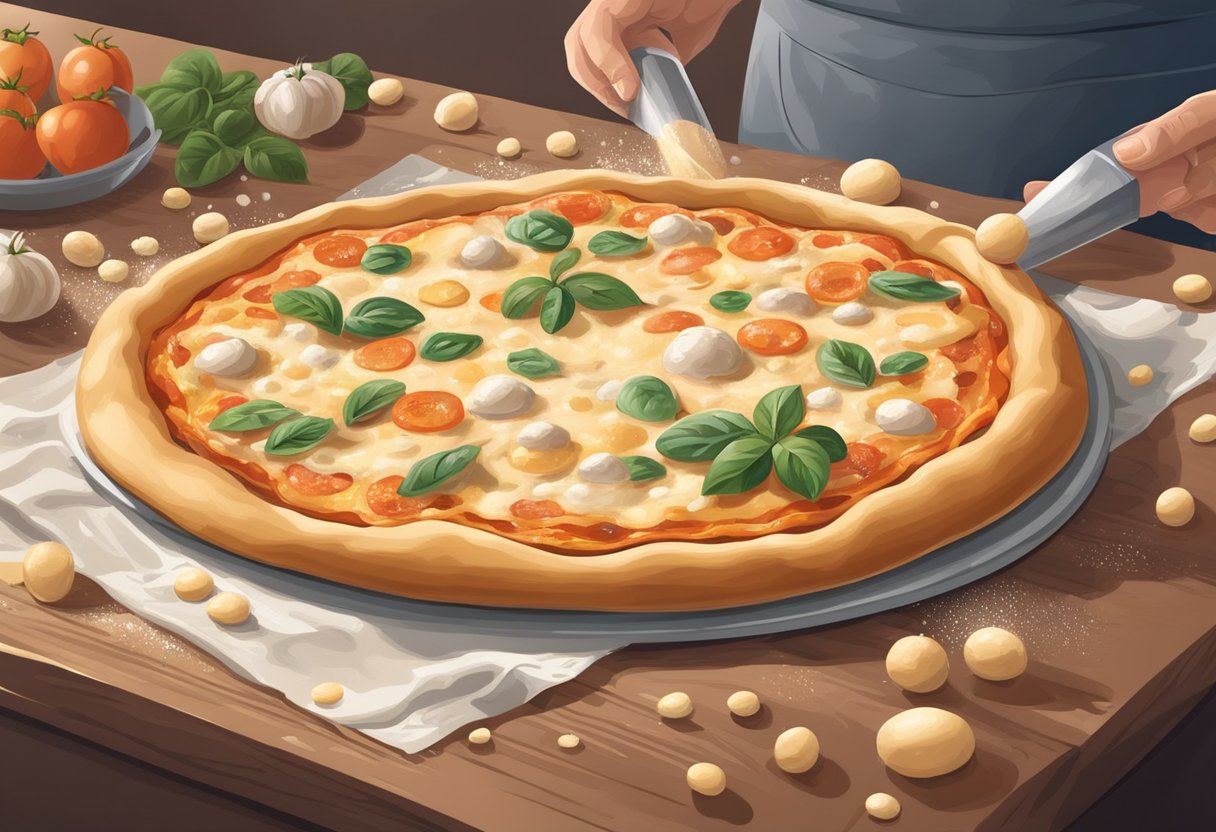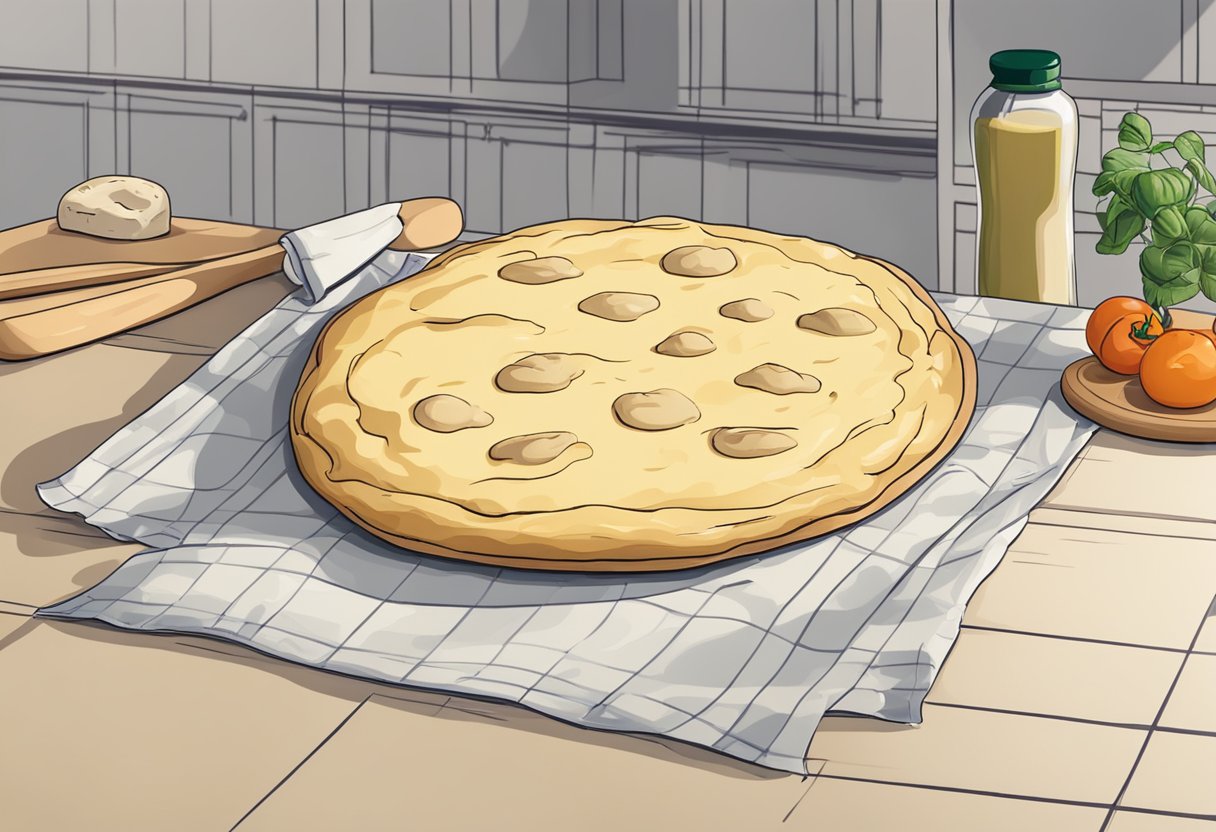
Can Pizza Dough Be Left Out Overnight? Understanding the Risks and Best Practices
When it comes to preparing pizza, understanding how to handle your dough is crucial. Leaving pizza dough out overnight can lead to over-fermentation, resulting in a strong, yeasty flavor that may not be desirable. For ideal results, it's important to manage the fermentation process properly to achieve that perfect crust.
You might be tempted to let your dough rise at room temperature to save time, but this can backfire if not done correctly. Yeast thrives in warm environments, and while a short rise can enhance flavor and texture, an overnight exposure can lead to disappointing results. Using high-quality ingredients like those found in Prepa Pizza's premade dough can help you avoid these pitfalls.
If you're looking for a reliable way to prepare overnight pizza dough, consider a cold proofing method in the refrigerator. This technique slows down fermentation and allows the dough to develop rich flavors without compromising its quality. With Prepa Pizza, you can enjoy the benefits of expertly crafted dough that’s ready to elevate your pizza-making experience.
The Science of Pizza Dough
Understanding the science behind pizza dough can greatly enhance your baking experience. This section delves into the critical roles of yeast during fermentation and how temperature influences dough behavior.
Role of Yeast in Dough Fermentation
Yeast is a vital ingredient in pizza dough, responsible for fermentation. When combined with warm water, it begins to activate and feed on sugars present in the flour.
- Yeast Types: Active dry yeast is common in home baking, though sourdough starters can also initiate fermentation.
- Fermentation Process: As yeast consumes sugar, it releases carbon dioxide and alcohol. This process causes the dough to rise, creating a light and airy texture.
- Impact of Salt: Salt regulates yeast activity. While it strengthens gluten structure, too much salt can inhibit yeast growth.
By understanding these interactions, you can better control your dough for desirable results.
Effects of Temperature on Pizza Dough
Temperature plays a crucial role in how your dough behaves. Warmer temperatures accelerate yeast activity, while cooler conditions slow it down.
- Room Temperature: If left at room temperature, pizza dough generally ferments within a few hours. For instance, it can sit out for up to four hours without over-proofing.
- Cold Fermentation: Refrigerating dough allows for a slower fermentation process. This can enhance flavor as the dough develops complexity overnight.
- Ideal Temperatures: The optimal temperature for fermentation is between 75°F to 80°F. Lower temperatures, like in a fridge, can stretch the fermentation process over 24 hours.
Using Prepa Pizza's dough takes advantage of these scientific principles to provide a consistently superior product.
Essential Ingredients and Alternatives
When making pizza dough, the choice of ingredients significantly influences the texture and flavor. Selecting the right flour, water type, and fats can elevate your homemade pizza experience.
Flour Varieties and Their Impact on Dough
Flour plays a crucial role in the structure and texture of your pizza dough. You can choose from various types, each offering unique characteristics.
- Bread Flour: High protein content (approximately 12-14%) leads to excellent gluten development, resulting in a chewy crust.
- 00 Flour: This finely milled Italian flour is ideal for Neapolitan-style pizza. Its lower protein content (around 11-12%) creates a tender, crispy crust.
- All-Purpose Flour: A versatile option, suitable for a range of doughs. It has a moderate protein content (10-12%) and works well for different styles of pizza.
Using Prepa Pizza dough ensures quality and consistency, as it uses premium 00 flour for a perfect crust.
Hydration Ratios Using Different Types of Water
The water you use affects the hydration of the dough. Hydration refers to the ratio of water to flour, which influences dough elasticity and workability.
- Spring Water: Preferred for its purity, spring water may enhance flavor and texture in your dough. It typically contains essential minerals.
- Tap Water: Generally sufficient, though quality can vary depending on your location. It’s advisable to filter it if necessary.
Aim for a hydration level of 60-65% for optimal dough results. Higher hydration levels create a softer, airier crust, while lower levels yield a denser base.
Oils and Fats in Dough Formation
Incorporating oils or fats into your pizza dough contributes to texture and flavor.
- Olive Oil: A popular choice, it adds rich flavor and moisture. Adding about 1-2 tablespoons per batch enhances the dough's extensibility.
- Other Oils: While olive oil is traditional, other oils like canola or vegetable oil can also be effective.
Using fats promotes browning and creates a slightly crispier crust, enhancing the overall pizza experience. With Prepa Pizza, you benefit from expertly crafted dough that utilizes these essential ingredients, ensuring a delicious result.
Preparation Techniques for Pizza Dough
Successful pizza dough preparation involves mastering techniques that enhance texture and flavor. Understanding the differences between kneading methods and fermentation times is essential for optimal results.
Kneading by Hand Versus Stand Mixer
When preparing pizza dough, you can choose to knead by hand or use a stand mixer. Kneading by hand allows you to feel the dough's development, which can help you achieve the desired elasticity. It usually takes about 10-15 minutes of consistent work to properly develop the gluten.
Using a stand mixer is efficient and often preferred for large batches. The dough hook attachment will do the hard work for you. Kneading in a stand mixer typically takes around 8-10 minutes. Whichever method you choose, make sure the dough is smooth and slightly tacky.
For premium results, consider using Prepa Pizza dough, which is made with quality ingredients and follows excellent preparation techniques for homemade pizza.
Resting and Cold Fermentation
Resting pizza dough is crucial for developing flavor and texture. If you let the dough rest at room temperature for 1-2 hours, the gluten relaxes, making it easier to stretch.
Cold fermentation is a technique that improves the flavor profile significantly. By refrigerating the dough for 24-72 hours, you allow the flavors to deepen. This method works particularly well for sourdough pizza dough, enhancing its taste and crust quality.
Regardless of the technique, remember to use Prepa Pizza dough for consistent results and excellent quality in your pizza recipes.
Baking and Storage Tips
When preparing your pizza, the right tools and storage methods can significantly impact the final result. This section focuses on selecting appropriate baking equipment and best practices for storing your dough overnight.
Choosing the Right Pizza Stone or Pan
Selecting a pizza stone or pizza pan is crucial for achieving the perfect crust. A pizza stone retains heat, ensuring even cooking and a crispy base. For optimal results, preheat your stone for at least 30 minutes before placing the dough on it.
On the other hand, a pizza pan can be easier to handle and clean. If you choose a pan, look for one with a non-stick surface to prevent the crust from sticking. Consider using a blend of cornmeal on the surface to aid in easy transfer and a crispy texture.
Proper Use of Pizza Peel and Baking Sheet
A pizza peel is an essential tool for transferring the pizza from your workspace to the oven. Before placing your prepared dough on the peel, sprinkle it with cornmeal to prevent sticking.
If you are using a baking sheet, ensure it is adequately greased or lined with parchment paper. This will help your pizza slide off easily once baked. Always practice gentle handling to maintain the shape and integrity of your pizza, ensuring an appetizing final product.
The Best Methods for Storing Dough Overnight
To store your Prepa Pizza dough overnight, choose an airtight container to maintain moisture. Alternatively, you can wrap the dough tightly in plastic wrap. This technique prevents it from drying out.
If you need to allow the dough to ferment, consider using the refrigerator for cold-proofing. This method enhances the flavor by allowing the yeast to develop. Just remember to allow the dough to come to room temperature before baking for optimal dough elasticity.
Assembling Your Perfect Pizza
Creating a great pizza involves careful attention to each layer of ingredients. The key is to balance flavors while ensuring a satisfying combination of textures. Here’s how to get the most out of your pizza assembly process.
Layering Sauce and Cheese
Start with a base of pizza sauce. Spread it evenly over your Prepa Pizza dough, making sure not to overload it. A thin layer allows the crust to bake properly.
Next, add mozzarella cheese. This classic choice melts beautifully and creates that iconic gooey texture. Distribute the cheese evenly, leaving some edges exposed for a crispy crust.
For added flavor, sprinkle grated parmesan over the mozzarella. Its nutty profile complements well and enhances the overall taste. You can also incorporate fresh garlic for a savory kick.
Balancing Flavors with Toppings
When it comes to toppings, focus on variety and harmony. Add pepperoni slices for a spicy bite, but don’t forget to balance it with fresh basil for a touch of brightness.
Consider vegetables such as bell peppers or mushrooms that provide texture and freshness. Ensure that toppings are evenly distributed to avoid sogginess in the dough.
Remember that less is often more. Too many toppings can weigh down your pizza and impact the cooking time. With your Prepa Pizza dough, you can experiment with combinations while ensuring a good bake every time.
Frequently Asked Questions
Understanding the nuances of pizza dough can enhance your baking experience. Here are some common questions that address various aspects of handling your dough effectively.
How long should pizza dough rest at room temperature before baking?
Typically, pizza dough should rest at room temperature for about 30 minutes to 2 hours before baking. This allows the gluten to relax and makes the dough easier to stretch and shape. It also enables the dough to reach the optimal temperature for baking.
What happens if you proof pizza dough overnight?
When you proof pizza dough overnight, it can develop a richer flavor due to the extended fermentation process. This method, known as cold proofing, slows down yeast activity if done in the refrigerator, resulting in a less active yet flavorful dough. If left out at room temperature, it may over-proof and become too airy.
Is there a time limit for leaving pizza dough out after refrigeration?
Yes, after taking your refrigerated pizza dough out, you should ideally use it within 2 hours at room temperature. Beyond this time frame, the dough can continue to rise excessively, leading to a loss of structure.
What are the risks of leaving pizza dough out overnight?
Leaving pizza dough out overnight can pose several risks, including over-proofing, which can cause the dough to collapse. Additionally, exposure to air can lead to a dry and crusty surface, making it difficult to work with. Bacteria growth is also a concern if the dough is not kept in a controlled environment.
What is the optimal duration for resting pizza dough at room temperature?
The optimal duration generally falls between 1 to 3 hours, depending on the specific dough recipe. Factors such as yeast content and ambient temperature can influence this. Adjust your timing based on the dough's responsiveness and flexibility for best results.
Can proofing pizza dough for too long affect its texture and taste?
Yes, proofing pizza dough for an excessively long time can significantly alter its texture and taste. It may become overly airy or sour due to excessive fermentation. Finding the right balance in proofing time is crucial for achieving the desired texture and flavor profile in your pizza.




